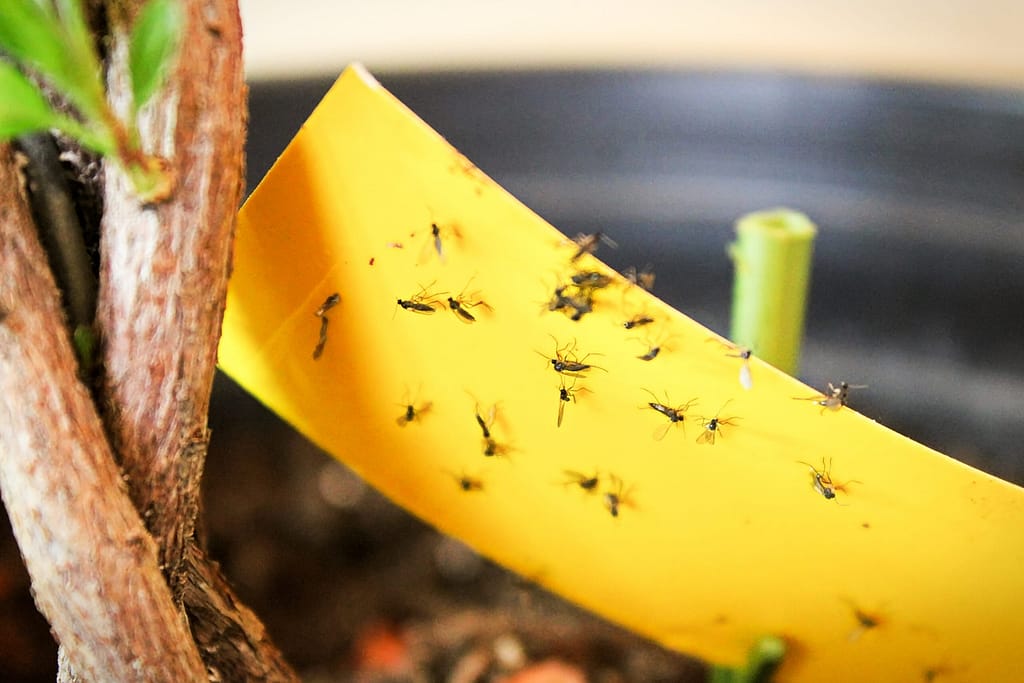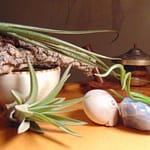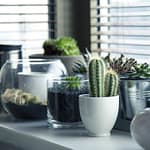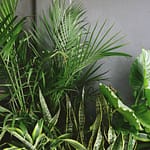
Plants bring some level calmness and serenity, to your space. That can quickly get interrupted by fungus gnats flying around your home.
Fungus gnats are one of the most common pest issues plant lovers face at some point. These gnats fly from plant to plant, eating on the fungus and other organic matter in moist soil. Moist or wet soil is an ideal environment for these gnats to breed, allowing the cycle of gnat life to continue and multiple. If you don’t get a handle on it, your minor annoyance will quickly grow into an infestation.
Fungus gnat don’t bite and don’t necessarily harm your plants. They are a nuisance. The adult gnats eat, breed, and die. However, the next generation will emerge from the soil and start swarming around your plants and your face. Who wants that?!
Preventing Fungus Gnat Infestation
I don’t think it is realistic to completely keep fungus gnats from getting into your home. They primarily make their way in from open doors and windows. If you live in a drier region, you may not have this issue. I live in a region where Spring and Summer seasons are quite humid. I do believe that gnat infestations are preventable. To help prevent a fungus gnat infestation:
- Don’t over-water your plants. Allow the soil to dry out as much as you plant will tolerate. Gnat larvae can’t survive in dry soil.
- Use soil that potting soil that drains wells and is suitable for the health of your plant. Soil that stays moist or wet grows fungus which attracts the gnats.
- Make sure there is enough air circulation in the room. Stagnated air and moisture also encourages fungus grow that attracts the gnats.
- Dump all stagnated water that collects in planter pots and planter trays.
- Don’t use old soil that was previously infested. This soil needs to be discarded immediately to prevent a re-infestation.
- Remove all dead leaves from the soil. This dead organic matter attracts bugs, including fungus gnats.
- Don’t use soil from outside. Soil from outside will likely have all kinds bugs you don’t want in your home.
Buyer Beware
Beware potting mixes you buy from home and garden store. Quality soil does matters. I can’t guarantee that you will get a quality bag of potting mix that is pest-free. Most potting mixes, including the high-end soil, do have pests of some type. However, a good organic potting mix should contain and beneficial microbials that protect plants from disease.
Be vigilant of gnats flying around plants at home and garden stores. If you see gnats flying around the plants at the store, it is most likely that they are the soil and will come home with you. If you must purchase the plant, change the soil before bringing the plant into your house. This is from personal experience. Dump and discard all of the existing soil from the plant, and replace with new healthy soil. This same suggestion applies for plants that need to be brought indoors before the Winter cold approaches.
Ways to Rid and Control Fungus Gnats
There are a few methods to get rid of gnats once you have them. Depending on the amount of plant you have, will take some time to be rid these flying pests.
- Method 1 – Use hydrogen peroxide (diluted in water)
It’s a natural pesticide and also oxygenates the roots. Mix approximately 1 tsp to 1 gallon of water. Apply to soil only. Avoid the foliage. Water with this mix every other waterings.
- Method 2 – Use gnat sticky trap
The sticky traps help control the adult gnat population. The traps come in yellow or blue, as fungus gnats tend to be attracted to both colors.
- Method 3 – Use ground cinnamon
Cinnamon is a natural fungicide and gnat repellent. Sprinkle on the surface of the soil. Cover as much of the surface area as possible. Do this to all of your potted plants. The cinnamon will stir up the adult gnats and start flying around to find the next ideal breeding ground. Reapply as needed.
- Method 4 – Eliminate top layer of soil
Removing and discarding 1-inch layer of soil will remove all or most of the gnat larvae in the soil. Add a new layer of healthy soil and add some ground cinnamon to deter the adult gnats from re-infesting the plant.
- Method 5 – Completely change the soil
Take the infested plants outside and completely change and discard the old soil. Replace with fresh healthy potting soil. Afterwards, you can sprinkle some ground cinnamon on the surface as a gnat repellent.
Another repellent is to cover the soil surface with potting sand (fine or course). This helps deters the adult gnats from borrowing themselves down in the soil to lay more eggs.
You can certainly combine any of the 5 methods along with the prevention tips to get better results.
Important note and warning: There are stronger insecticides but the smell may be too strong and unpleasant for enclosed spaces. These products are highly toxic and not necessarily meant for indoor use. I do not recommend this as a method, especially if you have pets, children, respiratory conditions, or other health concerns.




